HEALTH: HAWAII’S STRONGEST SUIT
Key Statistics
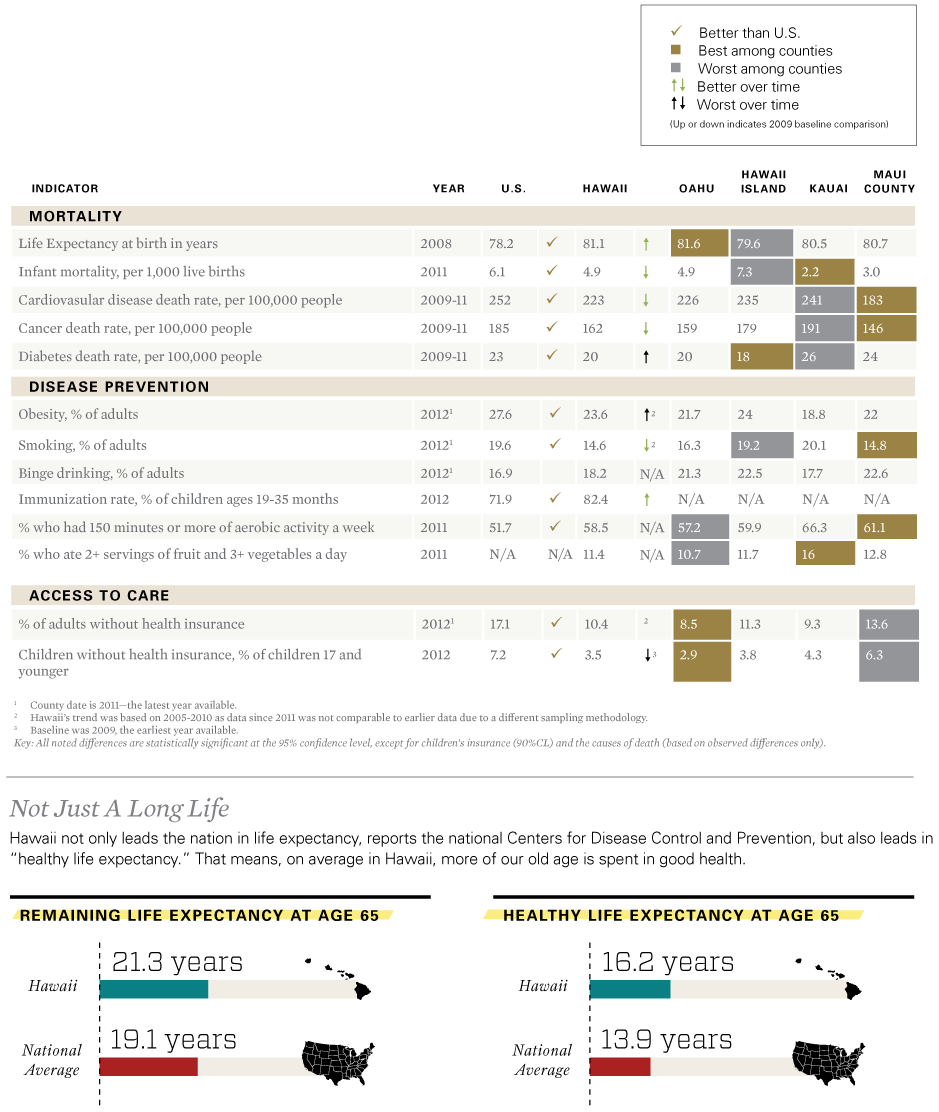
A Major Increase in Suicides
SUICIDE IS A GROWING tragedy in Hawaii. It was the second leading cause of death among people aged 15 to 34 from 2007 to 2011, according to the Hawaii Injury Prevention Plan. Only unintentional injuries killed more young people. Among people aged 35 to 54, it was the fourth leading cause of death.
In 2010, 207 people committed suicide in Hawaii, according to the Centers for Disease Control and Prevention, an age-adjusted death rate of 15 per 100,000 population. That was the 16th worst rate among the states.
In previous years, Hawaii’s rate was much lower. In 2009, Hawaii ranked 29th among the states and, in the previous five years, Hawaii always ranked among the eight states with the lowest suicide rate. In fact, during five years of the past decade, Hawaii’s suicide rate was fewer than 10 per 100,000.
In a bitter irony, a 2010 report written by economists and published by the Federal Reserve Bank of San Francisco effectively showed that the “happiest places on earth have the highest suicide rates.”
The report, called The Happiness-Suicide Paradox, compared quality of life surveys and suicide rates, and found the paradox applied across both U.S. states and Western industrialized countries. Though a precise reason can never be established, the report speculates “that people may find it particularly painful to be unhappy in a happy place, so that the decision to commit suicide is influenced by relative comparisons.”
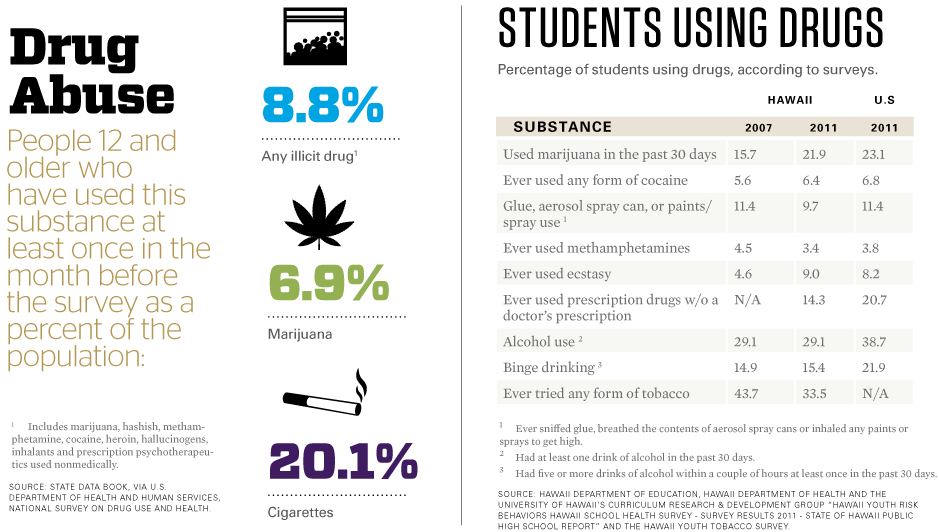
A Plan to Make Hawaii Healthier
Increasing physical activity and encouraging healthy eating are the ultimate goals of the Hawaii Physical Activity and Nutrition Plan – nicknamed the PAN Plan 2020.
“We need to make the healthy choice the default choice,” says Lola Irvin, project manager for the state’s Healthy Hawaii Initiative. “We need to change the norm and make things like taking the stairs or bringing healthier potluck dishes the norm.”
Educating Hawaii’s people about healthy choices is central to the seven-year plan, but there are plenty of specific goals. Among those are:
- More farmers markets overall and more farmers markets that accept the state’s SNAP card, which has replaced food stamps;
- More companies offering wellness programs, plus tax breaks to encourage those programs;
- A ban on sugary drinks at public schools while schools are in session;
- Policies that support breastfeeding through six months;
- Eliminating the excise tax on fruits and vegetables;
- Requiring health and PE instruction in all middle schools; and
- Redesigning comunities to add bike lanes, safe routes to schools and other measures that encourage exercise.
The program aims to get schools, healthcare providers, businesses and government all working toward a healthier Hawaii.
“This is a complex problem and it’s not going to be resolved overnight,” says Loretta Fuddy, director of the state Department of Health. “It has taken us generations to get to where we are today and it’s probably going to take us a generation to turn that back.”
Learn More
To read the plan and its 22 objectives, go to www.hawaiihealthmatters.org and click on PAN Plan Tracker in the green column on the left.
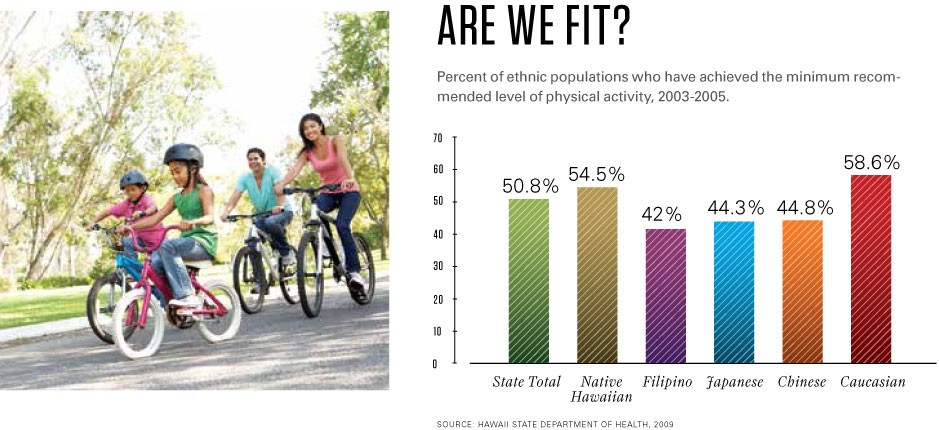
Unequal Outcomes
By many measures, Native Hawaiians on average
are in poorer health than other ethnic populations
in Hawaii
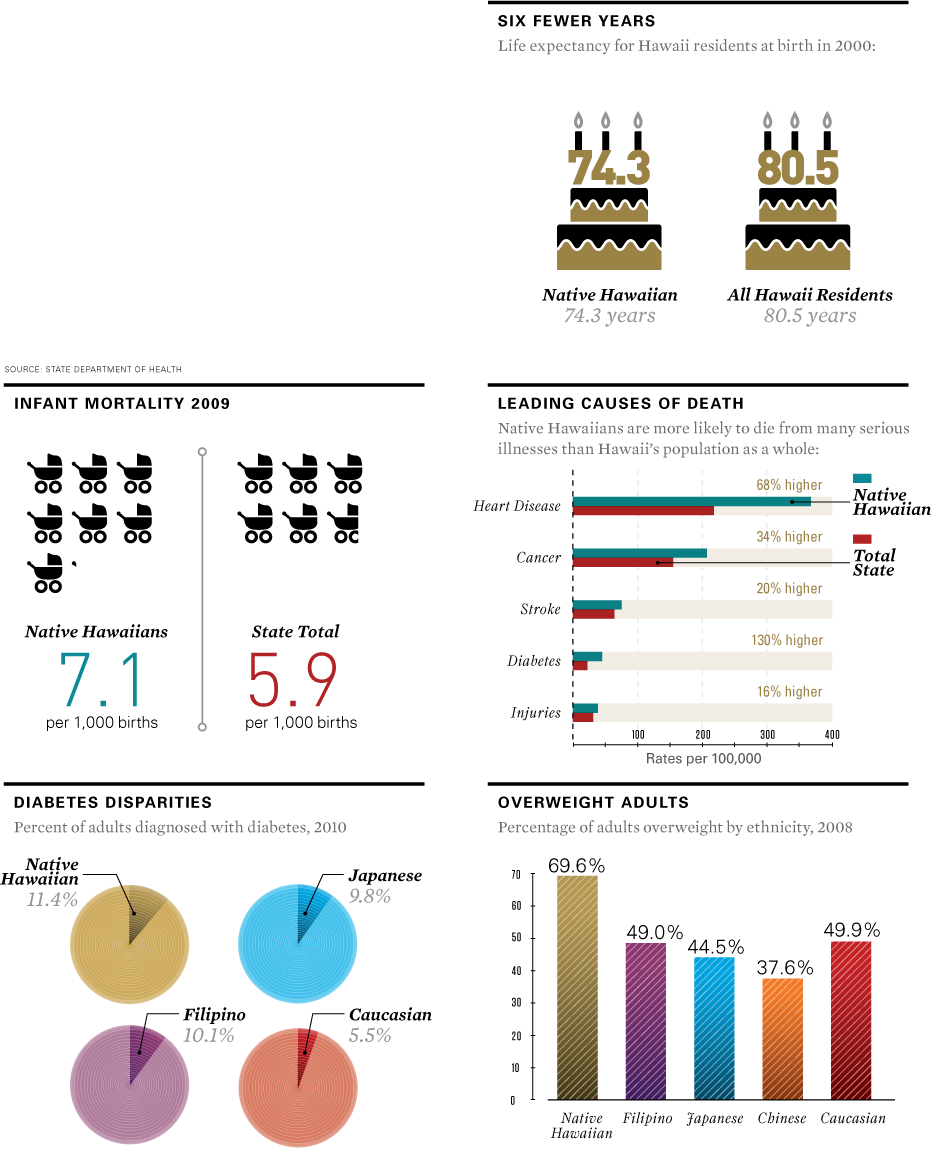
WHAT KILLS US
Here are the 10 leading causes of death for Hawaii residents, by age group, 2008 to 2012, as reported by the Hawaii Injury Prevention Plan.
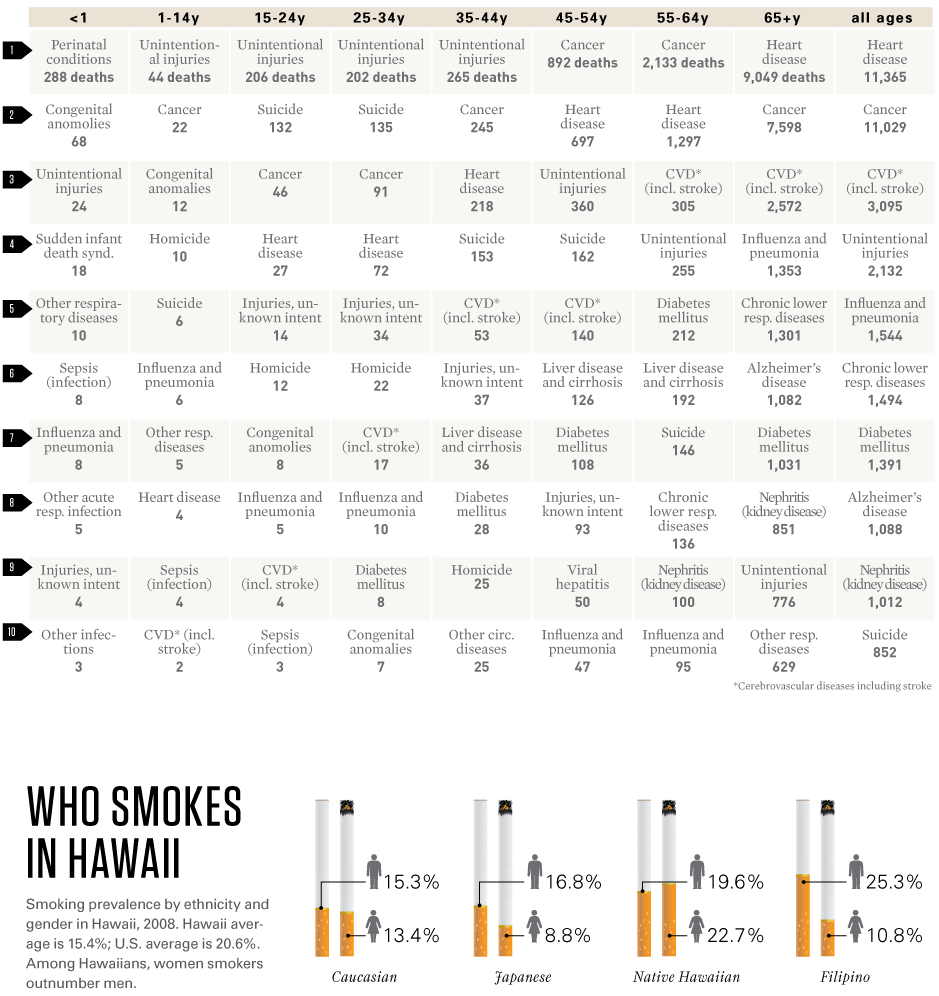
Health Map
How employment, insurance and lifestyle affect our healthy longevity
Key Factor in Hawaii’s Health
Hawaii’s 39-year-old law requiring employer-provided health insurance for anyone working more than 20 hours a week has helped create one of America’s highest rates of coverage. That has helped contribute to one of America’s healthiest populations. So does Hawaii itself, which provides residents with many opportunities to exercise.
However, Hawaii’s insurance mandate also incentivizes employers to reduce hours below 20 a week, resulting in many part-time and multiple job-holders. A part-time job limits your income for buying healthy food, which tends to be more expensive than unhealthy food. Multiple part-time jobs may leave less time for exercise and preparing healthy meals. This helps lead to major inequities in health based on employment.